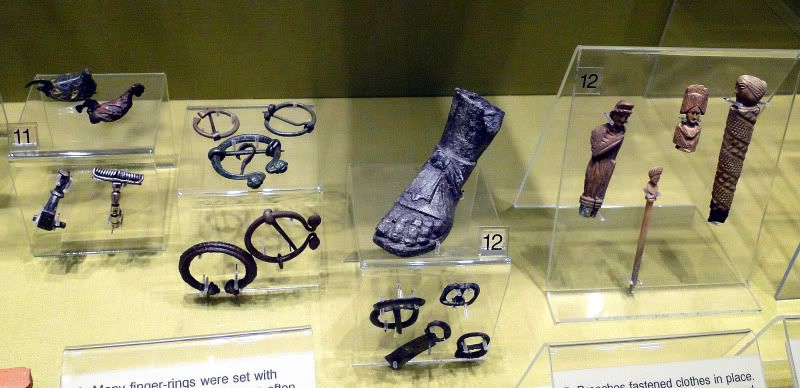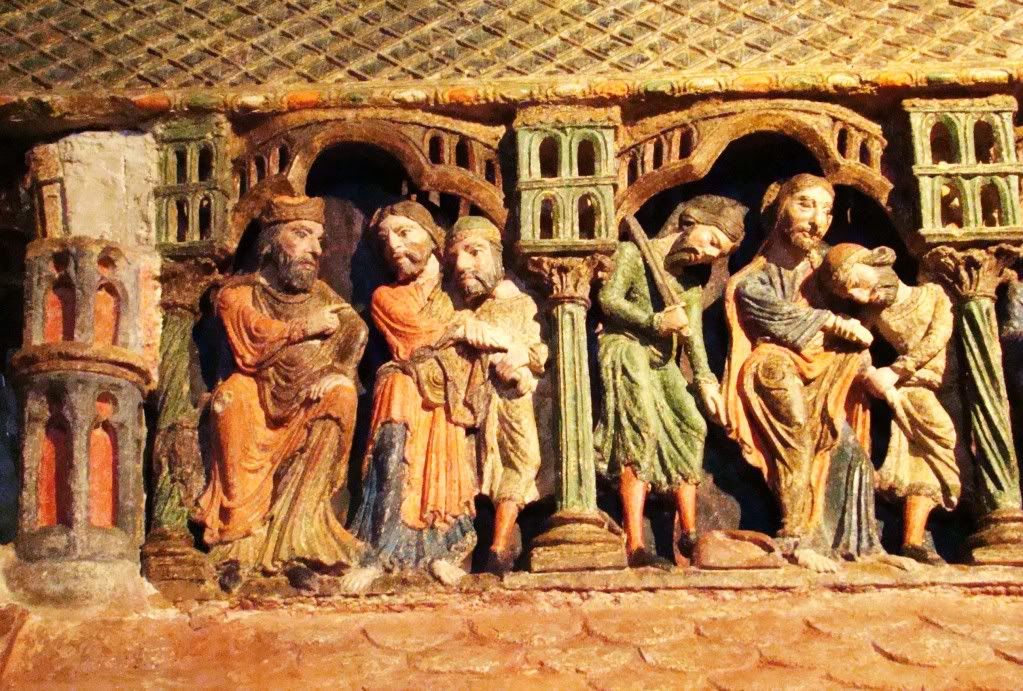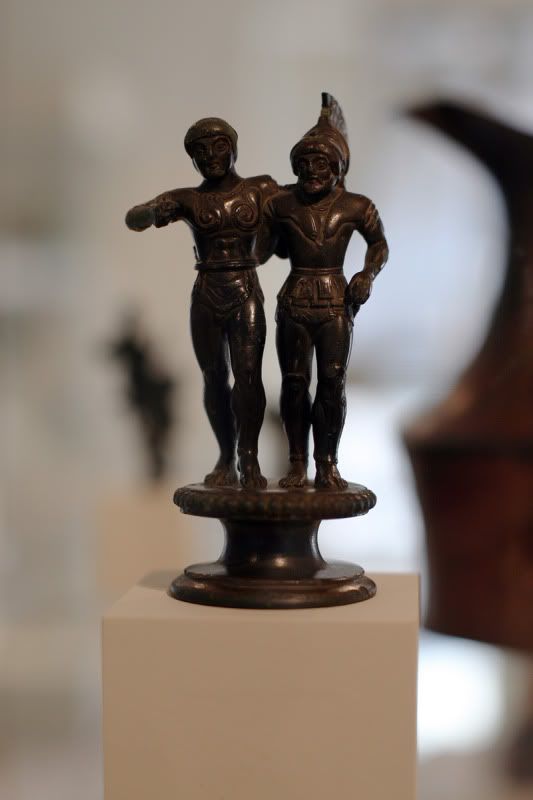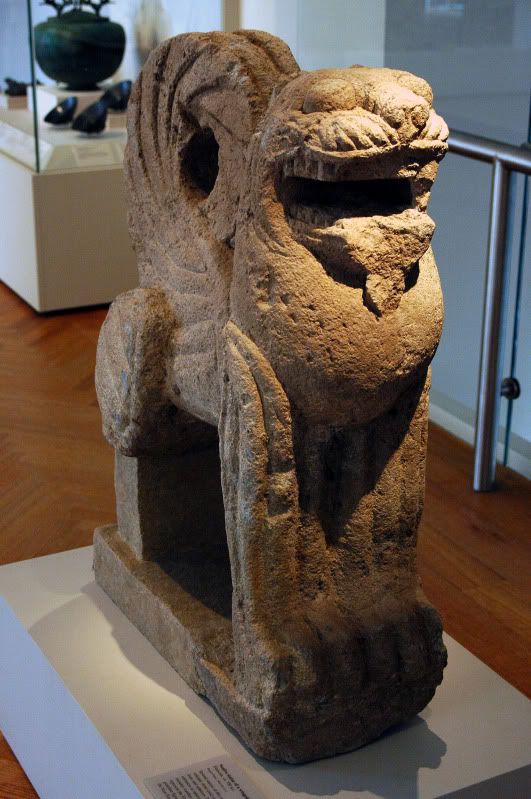Tenny Frank - Race Mixture in the Roman Empire - The American Historical Review, 1895. It is important to notice that this is about the early pre-christian Roman Empire, not the period when the Roman Empire was governed from Byzantium.
As you can read in the article the Slaves of the ancient Romans came from almost everywhere e.g. Greece, Africa, Germany, etc. Tenney Frank tells that there seems to be very little overlapping between the surnames of the free-plebeians and the Slaves of the Roman Empire.
Tenney Franks (1916) writes for instance the following:
"To discover some new light upon these fundamental
questions of Roman history .... It has at
least convinced me that Juvenal and Tacitus were not exaggerating.
It is probable that when these men wrote a very small percentage of
the free plebeians on the streets of Rome could prove unmixed
Italian descent. By far the larger part - perhaps ninety per cent -
had Oriental blood in their veins".
Ancient Rome: Plebeian Council
Tenny Frank - Race Mixture in the Roman Empire - The American Historical Review, 1895
Sunday, 23 January 2011
Thursday, 20 January 2011
Ancient Pre-Christian Romans in UK

Caerleon Roman Museum, Roman standard bearer. Wales, UK, Britain. Flickr Photo by Gauis Caecilius, 2010.

Three gods. Caerleon Roman Museum, Wales, UK, Britain. Flickr Photo by Gauis Caecilius, 2010.

Roman bath, Somerset, UK, Britain. Flickr Photo by Gauis Caecilius, 2010.

Relief of Roman Ships. Cogidubnus. Sussex, UK, Britain. Flickr Photo by Gauis Caecilius, 2010.

Caerleon Roman Museum, fertility god. Wales, UK, Britain. Flickr Photo by Gauis Caecilius, 2010.

Caerleon Roman Museum, gods. Wales, UK, Britain. Flickr Photo by Gauis Caecilius, 2010.

Roman items at Colchester Museum, Essex, UK, Britain. Flickr Photo by Gauis Caecilius, 2010.

Caerleon Roman Museum, Wales, UK, Britain. items. Flickr Photo by Gauis Caecilius, 2010.

Roman bead necklace. reconstructed. Essex, UK, Britain. Flickr Photo by Gauis Caecilius, 2010.

Strigil bronze. Used in Roman steam baths. Caerleon Roman Museum, Wales, UK, Britain. Flickr Photo by Gauis Caecilius, 2010.

Caerleon Roman Museum, Wales, UK, Britain. Flickr Photo by Gauis Caecilius, 2010.

Cornwall ancient structure . Flickr photo by Khy was here..., 2010.

Ancient Roman Chysauster Village, Cornwall, England. Flickr photo by Loz Flowers, 2008.

Penzance in Cornwall, England Roman amphitheatre carved out of a cliff. Flickr photo by supersam5, 2006.
Wednesday, 19 January 2011
The christianization of people of The Western Roman Empire carved in a 12th Century San Vicente, Avila, Spain
 Flickr Photo by d0gwalker, 2010. This is a detail from the Romanesque church monument of three Saints Vicente, Sabina and Cristeta. It is from San Vicente, Avila, Castilla y Leon in Spain.
Flickr Photo by d0gwalker, 2010. This is a detail from the Romanesque church monument of three Saints Vicente, Sabina and Cristeta. It is from San Vicente, Avila, Castilla y Leon in Spain.
Basílica de los Santos Hermanos Mártires. Photo by Outisnn, 2009.

Avila iglesia San Vicente cenotafio martires. Photo by Lourdes Cardenal, 2009.

Avila Basilica San Vicente,interiores (Sepulcro de los Santos). Photo by Zarateman, 2010.

Avila iglesia san Vicente cenotafio martires. Photo by Lourdes Cardenal, 2009.

Avila iglesia San Vicente cenotafio martires. Photo by Lourdes Cardenal, 2009. Pay attention to the snake around his neck.

Basílica de los Santos Hermanos Mártires. Photo by Outisnn, 2009.

Avila iglesia San Vicente cenotafio martires. Photo by Lourdes Cardenal, 2009.

Avila iglesia San Vicente cenotafio martires construyendo iglesia. Photo by Lourdes Cardenal, 2009.

Avila iglesia San Vicente cenotafio martires. Photo by Lourdes Cardenal, 2009.

Avila iglesia San Vicente cenotafio martires. Photo by Lourdes Cardenal, 2009.
The Christian people came from Eastern Europe and Byzantine.

Basílica de los Santos Hermanos Mártires, photo by Outisnn, 2009.

Avila iglesia San Vicente cenotafio martires. Photo by Lourdes Cardenal, 2009.
- A well told story - We are all free to interpret this story as we like - for me this is not about self-chosen martyrdom - it is about the suffering and murdering of the ancient people in Western-Europe through the process of Christianization. Even though it was relatively long-lasting, it started really much later than we previously have been told. Paganism was well-established in the minds of the Western-Europeans.
The last two photos are examples how the christian crusaders in the end made God in their own image and hung up and crucified “the disicple of the pagans” (which did not really fit their image or religion). You can see him hanging beneath the depiction of the blonde God. These people came from Christian Byzantium (or the later Eastern Roman Empire), they migrated westwards through Europe in the medieval period when Islam continuously had expanded in Eastern Europe. They destroyed much of the old Indo-European art in their crusade, and filled Europe with marble statues made in their own images. It is a wonder that this monument was allowed to “survive”, it clearly shows the ancient Indo-Europeans. A likely explanation for why it is kept is the fact that it in some ways represents a documentation or a monument of the christians own victory.
Monday, 17 January 2011
Ancient Etruscan Art of Europe - Culturally related to the Phoenician Seafarers and the glue between Asia and Western Europe

Etruscan. Louvre. Gold pin with a Mistress of the Animals (potnia theron). Gold with granulation, ca. 630 BC. Jatrow, 2008.

"The Pyrgi tablets" are laminated sheets of gold both in Etruscan and Phoenician languages. They are exhibited at the Etruscan Museum in Rome – “Museo di Villa Giulia” Read more here: Etruscan–Phoenician Alphabet

Etruscan. Gold Winged female figure Louvre. 6th century BCE. Unknown origin. Photo by Jastrow, own work, 2008.

Etruscan pendant with swastika symbols. Bolsena Italy, 700 BCE to 650 BCE. Photo by World Imaging, 2007.

Etruscan head. Exhibited: Metropolitan Museum of Art, NYC. Photo by Katie Chao, 2009.

Etruscan 520-510 BCE. Production in Cerveteri - Cerveteri - nekropolis Banditaccia – Terracotta. Photo by Ecelan, 2011.

Etruscan sarcophagus Etruscan sarcophagus from Cerveteri c. 520 BCE. Terra cotta, length 2 m. Museo Nazionale di Villa Giulia, Rome. Photo by fraxe, 2009.

Etruscan. Museo guarnacci, Urna degli sposi, I sec. CE. Photo by Sailko, 2008.

Etruscan Urnetta cineraria da volterra, ca. 2nd Century CE. Photo by Sailko, 2008.

Etruscan. Museo Archeologico di Firenze, urna cineraria istoriata. Photo by Sailko, 2006.

Etruscans. Museo guarnacci, Urnetta, terza serie 30. Photo by Sailko, 2008.

Etruscan. Museo guarnacci, urnetta, terza serie 09. Photo by Sailko, 2008.

Etruscan inscription. Piacenza Bronze. Liver of Piacenza, Mantik. Photo by Lokilech. 2007.

Etruscan. WLA metmuseum Bronze chariot inlaid with ivory MET museum. NYC. Photo by Futons on the rock, 2009.

Etruscan artwork, 540–520 BC. Found in 1812 in a tomb at Castel San Marino, near Perugia. Photo by Jastrow, 2006.

Etruscan relief. Metropolitan Museum of Art. Photo by Katie Chao, 2009.

Etruscan bronze. MET Museum of Art, NYC. Photo by katie chao and ben muessig, 2009.

Etruscan bronze. Met museum of Art NYC. Photo by katie chao and ben muessig, 2009.

Miroirdecalchas Etruscian Mirror. A representation of Kalkas as Harbinger. 5th. century BCE.

An Etruscian master painted this about 480 BCE.

Hekate capula italy. Etruscan. Hecate holding two torches and dancing in front of an altar, beyond which is a cult statue. 350- 300 BCE.

Etruscan sphinx. Metropolitan Museum of Art. Mary & Jon, 2009.

Etruscan. Cippo Perugino. Etruskiske cippus at the National archaeological Museum in Perugia, Italia. 3rd - nd2 centtury BCE. Photo by Louis-garden, 2009.

Etruscan. Perugia, Museo archeologico. Urna etrusca. Photo G. Dall'Orto, 2006.
Subscribe to:
Comments (Atom)